My shopping cart
Your cart is currently empty.
Continue Shopping
Thai food is a very popular cuisine all over the world. One of the main reasons for this popularity is the fact that it is packed with flavor. Thai cuisine utilizes a wide range of spices to enhance fragrance, flavor and color, making it exciting and tasty. Many of its ingredients also have high nutritional and health benefits.
Thai people use a wide range of spices in their dishes, but here are some key spices most commonly used in traditional Thai cuisine, curry pastes and condiments. Each spice has its own flavor and aroma that contributes to the depth and complexity of Thai cuisine.

Sun-dried chilies are one of the most popular ingredients used in Thai cooking. There are many varieties of chilies with different levels of hot and spiciness, such as bird's eye chilli, spur chilli, bell pepper, but the most popular one to make dried chillies is bird's eye chilli and spur chilli.
Most dried red chillies are very spicy and earthy in taste and possess a neutral aroma. Thai people use it on nearly everything, from salads, curries, soups, stir-fries, or dipping sauces as well as add it in their food for some extra kick.
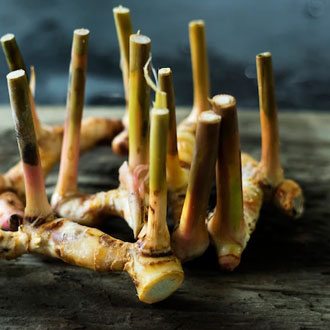
Galangal is a member of the ginger family and looks similar to ginger, however, it tastes completely different. Galangal has hot, clean taste with a citrusy, piney, earthy aroma, while ginger is fresh, pungently spicy, and barely sweet.
Galangal root is used in various traditional Thai cuisine from curries, soups to salads. However, it is not typically eaten as a standalone, but it is used to add scent and flavor to dishes.
The most well-known dish made of galangal is Tom Kha Kai or coconut milk soup with chicken.
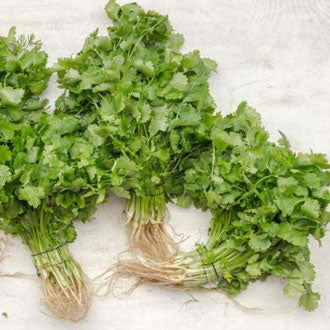
Coriander is a versatile ingredient used in Thai food and all parts of coriander are edible but vary in taste. The leaves and stems are usually used in salads, curry pastes or as garnish. The root is commonly used as the base for soups, curries, stews and as a mixture for marinade.
Local people will often grind or pound the root in a mortar before use to release the flavor and aroma, or to make a paste.
Coriander seeds give an earthy and nutty flavor and a unique aroma which make them a great marinade for red meat. Also it is used as the base in various types of curries, including Panang and Massaman.
Some other recommended dishes using corianders are Yam Phak Chee Krob (crispy coriander salad), Nam Prik Pak Chee (coriander spicy dip), and Kaeng Chued Moo Sub Pak Chee (clear soup with coriander and minced pork). Coriander is very nutritious, high in antioxidants, and dietary fiber.

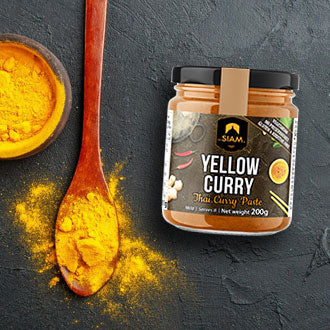
Turmeric is a scrumptious, vibrant, and flavorful spice that is available either dry or raw. It has an earthy, pungent smell and a little bit of spicy and bitter flavor when raw. Turmeric is frequently used in traditional dishes of Muslim or Southern Thai cuisine as well as Northern style curries.
Some famous dishes using turmeric are Kai Tom Khamin (turmeric chicken soup), Kua Gling (Southern Thai minced pork/chicken with turmeric), Khao Soi (Northern Thai curry noodle), Kaeng Hungley (Nothern Thai stewed pork curry).
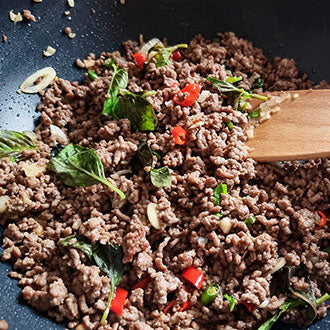
Thai sweet basil (or Bai Horapa in Thai) has constricted leaves, flatter than western basil. It's a versatile herb with a distinctive flavor with bold notes of licorice and spice.
The sturdiness of Thai basil leaves enables them to hold up when exposed to high cooking temperatures, such as in soups.
Sweet basil leaves, however, may wilt under too much heat. A handful of it is added in the final stages of cooking many Thai curries and stir fried dishes.

Just like chilli, garlic is widely used across many Thai cuisines from salads, curries, stew, stir-fry, deep-fry to dipping sauce. It can be used as a base for marinade, chilli paste and curry paste.
Thais will use garlic in many forms, crushed, chopped, pasted, and dried or eaten raw with high-fat foods like steak or curries. Famous dishes using garlic includes Moo Thod Kratium (Thai fried pork with garlic), Pla Kapong Neung Manao (steamed fish in lime and garlic sauce), and most Thai spicy dips.
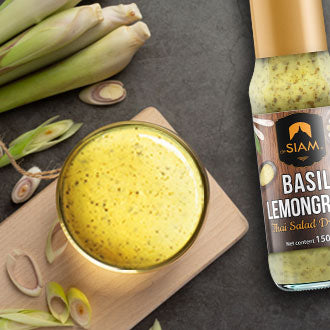
Lemongrass is popular in Thai cuisine, where it is used to flavor soups, marinades, curry pastes, broths, and meat and veg stir-fries. Lemongrass has a citrusy, sweet-smelling aroma.
Its lemon-like flavor is also accompanied by a minty zing. They are usually minced, crushed, or chopped into tiny pieces using their stalk. The best examples of Thai dishes with lemongrass are Tom Yam Kung (Thai spicy soup with shrimp), Kai Tod Trakrai (fried chicken with lemongrass), Yam Pla Tu (spicy salad with mackerel and lemongrass).

Kaffir lime leaves (“Makrut” in Thai language) are a key ingredient in Thai cooking. Makrut lime leaves are the Thai equivalent to bay leaves.
They can be added whole to Thai curries, soups, and stir-fries (and removed before eating the dish), and can also be cut up into very thin slivers and added to spice pastes or used as a topping in a variety of recipes
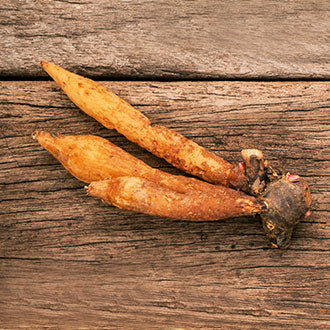
Fingerroot (also known as “Krachai” in Thailand) is a culinary herb. The shape of the rhizome resembles that of fingers.
It has a slightly medicinal flavor and is used in dishes such as Khanom Jin, and in some curries. In the west it is usually found pickled or frozen.
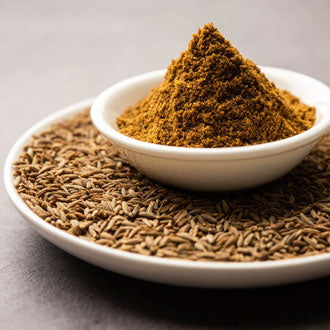
Cumin seeds have a distinctive flavor and aroma. It has a pleasant, nutty, sweet flavor with a fresh, robust aroma. In Thai cuisine, the seeds are an essential part of red, green, and yellow curry.
Cumin seeds can be used ground or as whole seeds, but Thai people like to roast and pound them before mixing with curry paste to enhance the flavor and aroma.
Chicken Satay, Massaman Curry and Green Curry are some classic dishes which include cumin seeds.